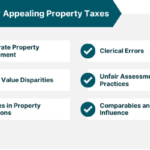Welcome to the wild world of Property tax appeal, where numbers tango and savings...
Residential property tax, the invisible hand that nudges homeowners every year, is like that...
Self-employment tax, the not-so-secret sauce that separates freelancers from the 9-to-5 crowd, is like...
Tax brackets, the whimsical rollercoaster of income tax, take us on a wild ride...
Welcome to the whimsical world of tax planning, where numbers dance and deductions waltz...
Welcome to the whimsical world of Business Taxes, where every deduction is a treasure...
Welcome to the whimsical world of income-driven repayment plans, where your student loan payments...













